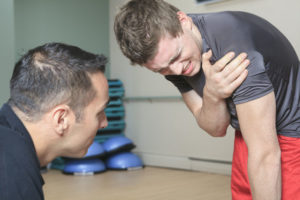It’s that time of year when flushed with the desire to get back to it after a bit of a break over the festive period can result in you getting injured. Avoiding injuries is paramount to any kind of sustainable progress, even more so as we get older. Given that you are always likely to pick one up at some point it rather than fire back into things after the holidays it’s a far better idea to ease yourself back into things.
I did this myself November and wasted about 3 weeks of training, though thankfully no injury. I say thankfully as I was coming back from a slight quad tear. It took me 3 weeks to realise that I needed to adjust things down. The rest period I had just had was on the back of having peaked as well as the quad tear. As a result, I had the general deconditioning that occurs after a rest period plus there was the normal drop in performance from the peak itself.




